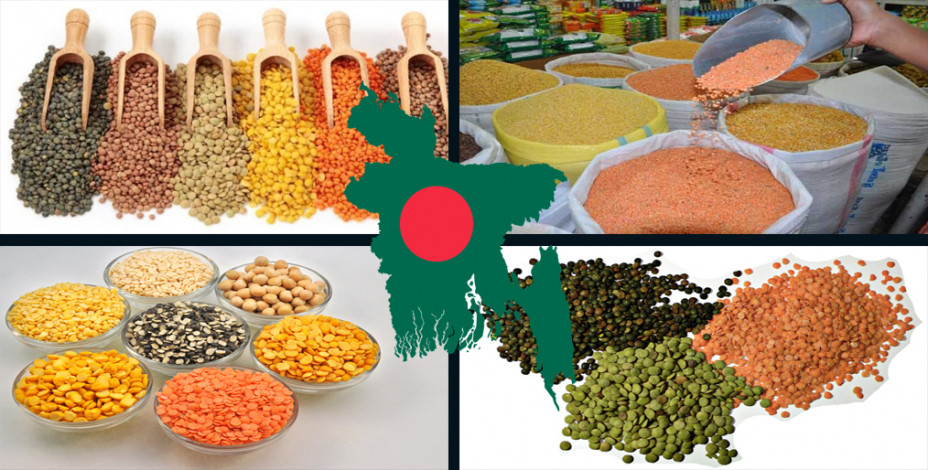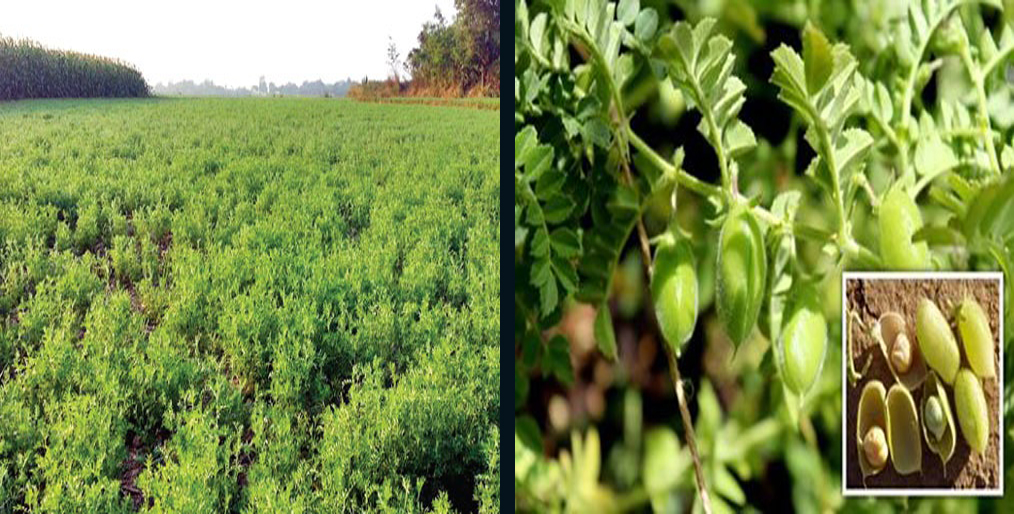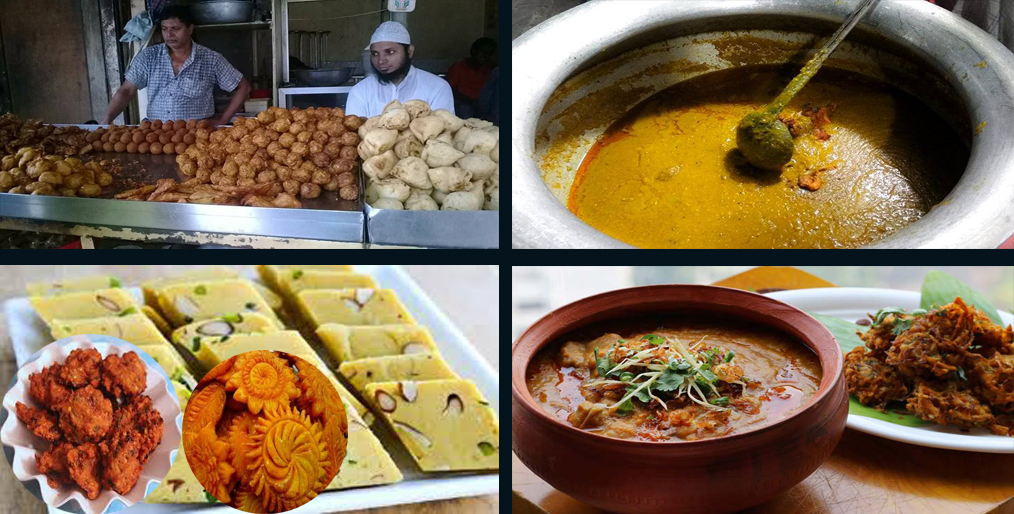
SZ Kabir: Pulse/Dal is a cereal belonging to the bean tribe. It is the dried seed of the seasonal crop. Mainly pulses are bauli, mugs, lentils, legumes, peas, arahar, mashkalai, khesari etc. All kinds of pulses are ultimately necessary and beneficial for human beings. Pulses are the main diet of protein. It contains about 20 to 25 percent of the protein content. Due to excessive lysine and cheaper prices, pulses are known as the Amish/meat of the poor. In addition to protein, pulses contain sufficient sugars, fats and mineral salts. It contains about twice as much protein as wheat and about three times as much protein as rice. In India, pulses have come as a result of the arrival of the Aryans. In ancient times there was no special circulation of Bengali pulses. Later on, the pulses started gradually in Bengal. Pulses are a rabbit, largely cultivating the country. However, greater cultivation is done in greater Dhaka, Faridpur, Jessore, Kushtia, Rajshahi, Comilla, Noakhali and Barisal districts of Bangladesh. Due to more rice cultivation, the cultivation of pulses is gradually decreasing. More than two decades ago, the area under cultivation of pulses was about 3,30,000 hectares. At present, pulse production is much lower than the demand in the country. For this, a lot of pulses have to be imported from abroad.

File Picture[/caption] Varieties of pulses of different types • Khesari pulses • Lentils • Mashkalai • Mungdal, Sonamugdal, Greenmogudal • Motordal • Chickpeas / Chana boots • Arohar pulses Use of pulses in Bangladesh In Bangladesh, Khesari pulses are usually cultivated as livestock. However, food is also popular in the northern part of the country. Lentils are a very popular and feast day. Chola and Musculoidal are occasionally eaten. However, in the month of Ramadan, chola and its pulses are widely used as iftar. Besides, various types of food can be prepared from pulses such as khichuri/ hotchpotch, Piaju, chatpati, dalpuri etc. Dal pulp is made by drying pulses, which is a popular food in the countryside it is mixed in a variety of ways various sweet products are also made from pulses. Such as Mugdal jilipi. It is customary to make haluwa with pulses on the day of Shabe Barat. Moreover it is well known in the vegetarian diet list. Lentils Lentils are one of the major cereals in Bangladesh. Its English name is Red lentil. This pulse is boiled in water and cooked with oil-spices and rice is mixed with cooked pulses. In the human body, it is said that lentils are beef for the poor. The lentils are light red in color. The grains are smaller than the stems, plates, or boots. The lentils are highly rich in lentils; As a result, the human body is sufficient to cope with the lack of acidity. When cooked with salt, spices and oil, it is delicious to eat. It is elite in comparison to grains, peasants, peas, khesari, etc. Lentils are rarely used as animal feed. Not just cooking with water for eating with rice; the lentils are cooked and eaten by filling. Roasted mushrooms are mixed with rice. Also cooked are lentil soup. Old Dhaka's famous food Halim is made with lentils which are made in a mixture of many other pulses including lentils and various spices. It is a thick liquid diet. Lentils help to control blood sugar in diabetics, especially for those whose blood sugar rises after consuming food, lentils are very beneficial. In addition, regular use also helps reduce high pressure.

Mashkalai Mashkalai is a type of pulse. It is mainly a shrub species of the genus Liguminaceae. This grain is available from vigna mungo. This pulse is the most prevalent crop in the Indian subcontinent and its use is most prevalent in this region. It is also used as green manure, cover crops and livestock. The Mashkalai pulses are cooked in different ways. Fish, meat and vegetables - all of them are cooked in a combination of pulses. In the north and northwest of the country, its cultivation is high. Experts say that Mashkalai pulses contain between 20 and 23 percent of the fish. This pulse is a rich source of protein and vitamin B. This pulse reduces waste in the stomach. Increases the sperm of men as well. This pulse, which provides the body with essential protein, is interesting and invigorating Khesari pulses Khesari pulses is a type of yellow color vegetable seed or kalai which is known as pulse. Khesari kalai is a shrub plant whose scientific name is Lathyrus sativus and its english name is Grass pea or Chikling vetch. Khesari pulses are a major staple food in many countries, including Bangladesh. People from different parts of the world eat Khesari pulp in different ways. It is also widely used as animal feed. In many countries of South Asia, including India, Pakistan, Bangladesh, Sri Lanka, Nepal, pulses are long used in daily food lists. Chickpeas/Chola/Chana Boot Chola is a pulses cereal. It is rich in protein. It is cultivated in the Middle East, West Asia and the Indian subcontinent. There are basically two types of Chola worldwide - Deshi Chola and Kabuli Chola. Deshi chola are cultivated in the Indian subcontinent, Ethiopia, Iran and Mexico. They are darker in color and smoother on the skin. The amount of fibers is high in Deshi chola. Kabuli Chola is light-colored, smooth-skinned. They are cultivated in Afghanistan, North Africa, southern Europe, and Chile. Currently it is also cultivated in the Indian subcontinent. Many types of food are prepared by the use of kabulis powder/bason, such as Piaji, Baguni, Pakora, etc.

Chola as a healthy food is quite good. Chola is very nutritious. It is a significant source of amnesia. The amount of acid in the stool is approximately equal to the amount of meat or fish ingested. Therefore, if the food list is chewed, the fish is less than the quantity of meat. In developing countries like our country, Chola can also be considered as an alternative to fish or meat. Peeling pulses, lettuce in vegetables, boiled broccoli, bason for different items - can be eaten in various ways. Mungdal Mungdal is a plant species of Legum family. The origin of mug is widely cultivated in South Asia and Southeast Asia, in which India, Pakistan, Bangladesh, Nepal, Myanmar, Thailand, the Philippines, Indonesia, China, and Korea are widely cultivated. Mugs are also grown in East and Central Africa, the West Indies, the United States and parts of Australia. Mugs are used as ingredients for spicy and sweet foods as well. Mugs are mainly erect or semi-averaged annual shrubs that produce yellow flowers and light brown seeds throughout the year. Mugs are commonly used in cooking throughout Asia.Fellon Fellon has a lot of food energy and protein. The duration of this pulse is 17 to 22 minutes. Seed content is 20 to 30%.
Comment Now